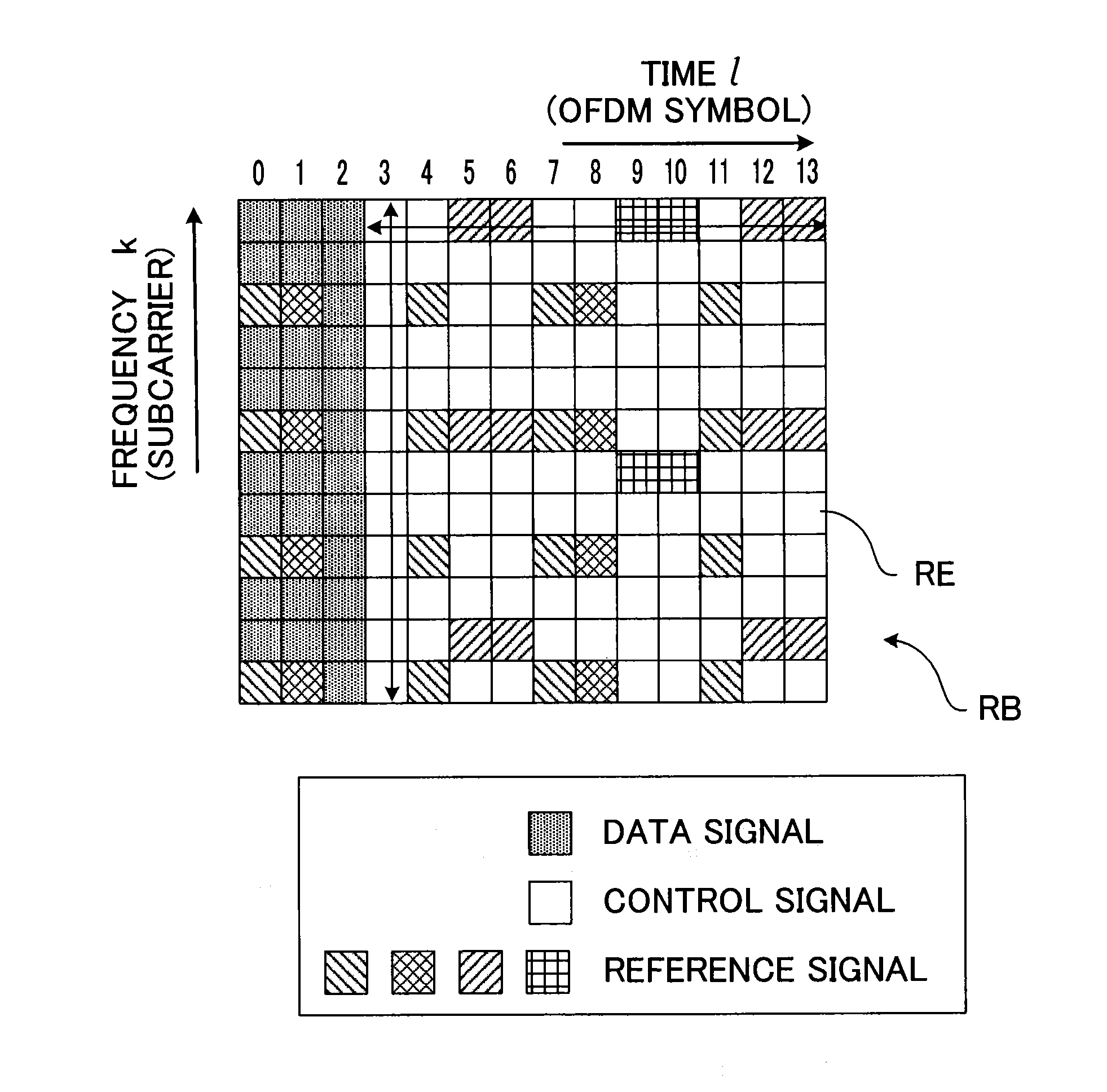Mobile communication terminal
a mobile communication and terminal technology, applied in the field of mobile communication terminals, can solve the problems of channel status, low accuracy of receiving weights calculated, and low accuracy of receiving weights, etc., and achieve the effect of small merit, good reception quality and good reception quality
- Summary
- Abstract
- Description
- Claims
- Application Information
AI Technical Summary
Benefits of technology
Problems solved by technology
Method used
Image
Examples
first embodiment
[0050]FIG. 5 is a block diagram showing the structure of the mobile communication terminal according to the first embodiment of the present invention. FIG. 5 shows only parts involved in signal reception and does not show other parts. As shown in FIG. 5, each mobile communication terminal includes multiple receiving antennas 20 for receiving electric wave, and a radio receiver 22 that is a reception circuit applied to OFDMA for converting electric wave received at the receiving antennas 20 to an electric signal.
[0051]Furthermore, the mobile communication terminal includes a control signal recognizer 24, a UE-specific reference signal demodulator 26, an interference rejection combining processor 32, a non-interference-rejection receiving weight calculator 33, a signal separator 34, a demodulator 36, a cell search executor 38, a quality ratio calculator 41, an interference rejection combining determiner 42, a control signal recognizer 24, and a threshold setter 46. These structural el...
second embodiment
[0074]The structure of a mobile communication terminal according to a second embodiment of present invention is the same as that of the first embodiment that has been described with reference to FIG. 5. In the following, characteristics of the second embodiment that differ from the first embodiment will be described in detail.
[0075]At the cell search, the reception quality measurer 40 measures reception qualities of at least three synchronization signals sent from different base stations and received by the mobile communication terminal. The quality ratio calculator 41 calculates a ratio of the reception quality of the signal from the desired base station (that is decided at the cell search) measured by the reception quality measurer 40 to a reception quality of another signal from each of at least two base stations measured by the reception quality measurer 40. In other words, the quality ratio calculator 41 calculates multiple the quality ratio RQ in accordance with the equation b...
third embodiment
[0083]FIG. 8 is a block diagram showing the structure of a mobile communication terminal according to a third embodiment of the present invention. FIG. 8 shows only parts involved in signal reception and does not show other parts. In FIG. 8, the same reference symbols are used to identify elements commonly used in the first embodiment in FIG. 5, and these elements will not be described in detail.
[0084]The mobile communication terminal according to the third embodiment includes a channel quality indicator (CQI) calculator 50 for calculating a channel quality indicator on the basis of the power of the signal received from the desired base station and the power of the interfering signal. The CQI may be any one of the SNR (signal-to-noise ratio), the SIR (signal-to-interference ratio), the SINR (signal-to-interference-plus-noise ratio), and the SDNR (signal-to-distortion-plus-noise ratio).
[0085]The interference rejection combining determiner 42 compares the CQI calculated by the CQI cal...
PUM
 Login to View More
Login to View More Abstract
Description
Claims
Application Information
 Login to View More
Login to View More - R&D
- Intellectual Property
- Life Sciences
- Materials
- Tech Scout
- Unparalleled Data Quality
- Higher Quality Content
- 60% Fewer Hallucinations
Browse by: Latest US Patents, China's latest patents, Technical Efficacy Thesaurus, Application Domain, Technology Topic, Popular Technical Reports.
© 2025 PatSnap. All rights reserved.Legal|Privacy policy|Modern Slavery Act Transparency Statement|Sitemap|About US| Contact US: help@patsnap.com



